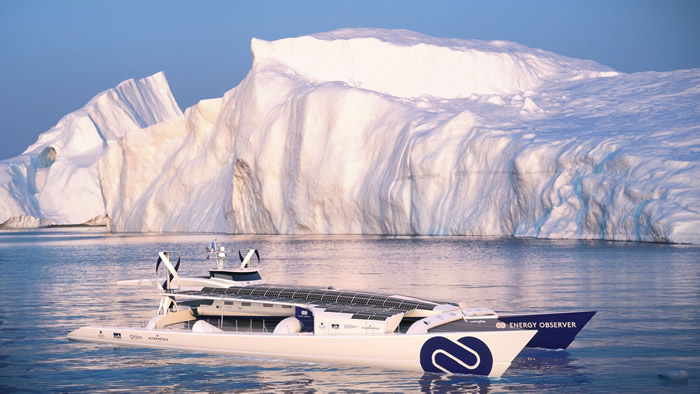In a bid to prove the effectiveness of hydrogen as a renewable fuel, Victorien Erussard and Jérôme Delafosse will sail around a world in a boat powered by the gas – made from the elements they encounter on the way. “The problem is that 95 per cent of the hydrogen that you use already is made out of fossil energies,” says Delafosse. “We will produce hydrogen onboard from the ocean, we will clean and purify the water and then we will electrolyse it and then compress it in tank storage.”
The Energy Observer, which sets sail from Paris in May 2017, is an ex-racing catamaran that can generate hydrogen from 130 square meters of solar panels, two wind turbines, a traction kite and two reversible electric motors. Explorer Delafosse, 45, and Erussard, 37, an experienced offshore racer, partnered with French research centre CEA-LITEN to develop the technology. “When we are over-producing energy, when we have a lot of wind and sun, the idea was not to waste this energy and to just keep it on board,” says Delafosse. “Hydrogen is the best way to do this because it’s very light and the efficiency of hydrogen is three times more than just fuel.”
The Energy Observer has hydrogen tanks instead of a battery, so even though it weighs 30 tonnes, it is nearly three times lighter than MS Tûranor PlanetSolar, the last solar powered boat to circumnavigate the globe. In theory it can also go three times faster – a potential top speed of 42 knots – although in practice Delafosse expects it to cruise at eight to 10 knots. However, whereas the PlanetSolar went round the world in 18 months, the sponsor-funded Energy Observer team expects to take six years, at a cost of €4m (£3.42m) per year.
Why so slow? Because Energy Observer is set to make 101 stops, showcasing the potential of renewable energy at stop-offs around the world. “We can use this technology in hotels, in houses, in cars… the idea is to be less dependent on the network,” Delafosse says. “It shows how fast things can happen: as it did in London at the turn of the last century with [moving from] horses to cars, it will happen with renewable energy.”
More information: WIRED



